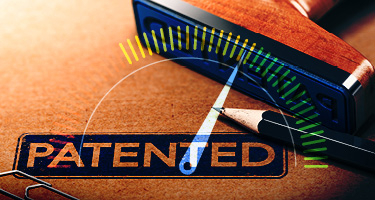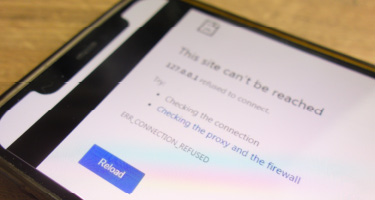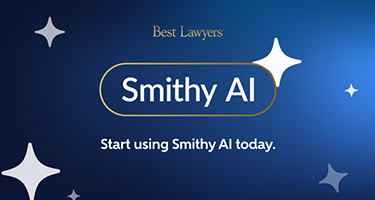1. What different types of intellectual property rights exist to protect: (a) Inventions (e.g. patents, supplementary protection certificates, rights in trade secrets, confidential information and/or know-how); (b) Brands (e.g. trade marks, cause of action in passing off, rights to prevent unfair competition, association marks, certification marks, hallmarks, designations of origin, geographical indications, traditional speciality guarantees); (c) Other creations, technology and proprietary interests (e.g. copyright, design rights, semiconductor topography rights, plant varieties, database rights, rights in trade secrets, confidential information and/or know-how).
The following intellectual property (IP) rights are recognized in Russia:
- Patents (including for inventions, utility models and industrial designs).
- Trade marks and service marks.
- Copyrights (including computer programs and databases) and related rights.
- Know-how (also known as secrets of production).
- Mask works (topologies of integrated circuits).
- Achievements of selection (including plant varieties and animal breeds).
- Other IP rights (company names, trade names, appellations of origin)
All IP rights are protected by law.
Patents can protect inventions, utility models and industrial designs. To be protected, they have to be granted and registered in Russia.
To be patentable, the subject matter of an invention must be a technical solution in any area of technology related to either of the following:
- A product (including a device, substance, micro-organism strain or culture of cells of plants or animals).
- A method (a process of conducting actions on a material object with the assistance of material means), including the application of a product or method for a certain purpose.
For an invention to be patented, it must pass the patentability test on novelty, an inventive step and industrial application.
A utility model is protected if it represents a technical solution related to a device. The utility model must be new and industrially applicable. Patent applications for utility models (national and under PCT) must be filed with RUPTO.
Industrial design rights extend to solutions related to the outer appearance of articles. Designs are patentable in Russia if they are new and original. The essential features of a design must define the aesthetic characteristics of an article, including its form, configuration, ornaments, combination of colours, lines, outlines, textures and patterns of materials. The technical functions of an article are not protected by industrial designs.
To be protected in Russia, a trade mark must be filed with RUPTO. However, as Russia is a signatory to the WIPO Madrid Agreement Concerning the International Registration of Marks 1891 (Madrid Agreement) and the Madrid Agreement concerning the International Registration of Marks and the Protocol Relating to that Agreement 2004 (Madrid Protocol), international trade mark registrations can also be protected in Russia. An unregistered mark, or mark-in-use, is not protected, unless it has obtained ”well-known” status through registration with RUPTO. Any words, pictures, three-dimensional configurations and other marks may be registered as trade marks. The registration of non-traditional trade marks, such as sounds, colours and smells, is not prohibited by the law. To be registered, a mark must be new and distinctive (inherent or acquired).
Copyright protection subsists in works of science, literature (including computer programs and databases) and art that:
- Result from a person’s creative input.
- Are fixed in a tangible medium.
- Meet the relevant requirements regarding nationality or domicile of the author and the country of first publication (works first published in Russia or works first published outside Russia providing that the author(s) are citizens of Russia, a WTO member-state or other states participating with Russia in international treaties providing copyright protection).
The following examples of works of authorship can obtain copyright protection:
- Literary works.
- Dramatic works.
- Musical works.
- Choreographic works and pantomimes.
- Audio-visual works.
- Sculptural, graphic and design works.
- Architectural works.
- Pictorial works.
- Computer programs (software).
Copyright law also protects compilations (for example, databases) and derivative works (for example, translations).
Performances, phonograms, broadcasts, databases (content), and works of science, literature and art that are first published after they have entered the public domain can be protected by way of related rights protection.
Confidential information can be protected as know-how. Know-how must not be registered. However, the owner of confidential information must undertake certain reasonable measures to maintain the confidentiality of the relevant information. If such measures are not implemented, the confidential information will not be protected as know how. The know-how must have an actual or potential value for it to be legitimately protected from third parties.
One of the legal ways to acquire know-how protection is to implement the ”trade secrets regime”. The owner must properly identify the confidential information, limit the access to the confidential information (by establishing the appropriate procedure for dealings with the same), affix the notice ”trade secret” to the medium where the confidential information is stored (along with the owner’s details), and follow the other steps required by the law (for example, define the procedure for dealings with the confidential information).
If one or more of these steps are ignored or omitted by the owner of the confidential information, the ”trade secrets regime” will not be introduced and the information will not be protected as know-how. However, the “trade secrets regime” is not the only option for know-how subsistence and protection, as the owner of the confidential information may take certain other (reasonable) measures to preserve the secrecy of it.
Mask works represent integrated circuits’ layouts (topologies). To be protected, a mask work must be creative/original and innovative
Registration of a layout-design is not required, although optional registration with RUPTO can be carried out at any time during the term of protection.
Achievements of selection represent plant varieties and animal breeds. To be protected, a plant variety or animal breed must be new, distinctive, uniform and stable.
Plant varieties and animal breeds must relate to botanical and zoological types of objects as defined by the Russian Ministry of Agriculture. The exclusive rights to achievements of selection are attested by the special patents issued by the Russian Ministry of Agriculture.
Patents, trademarks and copyrights are the most ‘popular’ IP rights.
2. What is the duration of each of these intellectual property rights? What procedures exist to extend the life of registered rights in appropriate circumstances?
- The term of patent protection for inventions is 20 years from the filing date. However, patents for pharmaceuticals, pesticides and agrochemicals can be extended for another five years.
- The term of protection for utility models is ten years from the filing date and this period cannot be extended.
- The initial term of protection for industrial designs is five years from the filing date. The term of design protection can be extended several times for another five years. However, the maximum term of industrial design protection must not exceed 25 years.
- When the trade mark is registered it is valid for ten years. Trade mark registrations can be renewed for additional ten year periods, an unlimited number of times
- The general term of copyright protection, including for computer programs and databases, is the life of the author plus 70 years following his/her death. In case of anonymous or pseudonymous works, – 70 years after publication. In the case of a work published within 70 years from the author’s death, – 70 years from the date of first publication.
- The protection for related rights starts from the creation of the subject matter, and lasts:
- For performances: the lifetime of the performer, but not less than 50 years from the performance or the date of its fixation or broadcasting.
- For phonograms: 50 years after its fixation, or, in the case of a phonogram which is made available to the public within this period, 50 years after the publication.
- For broadcasts: 50 years after broadcasting.
- For databases (content): 15 years after completion of the database, or, in the case of a database which is made available to the public within this period, 15 years after the publication.
- For works first published after they have entered the public domain: 25 years after the first publication.
- Know how is protected for as long as the confidentiality of information is maintained. If the confidentiality of information is lost, the exclusive right to know-how will lapse immediately.
- The term of mask work protection is ten years from whichever is the earliest: the date of the first use of the topology (that is, the documented date of its introduction into commerce), or the date of registration of the topology with RUPTO (if applicable).
- The general term of protection of achievements of selection is 30 years from the registration date. However, the term of protection for plant varieties such as grapes, decorative trees, fruit cultures and forest varieties are 35 years.
3. Who is the first owner of each of these intellectual property rights and is this different for rights created in the course of employment or under a commission?
- The owner of trademark is the registrant.
- The general rule is that the author of a copyrighted work or patented subject matter is the first owner of that work.
- If the author (an employee) created the work/subject matter in the course of her employment, the employer is the first owner of the exclusive rights in the employee’s work/subject matter, unless there is an agreement to the contrary.
- Where a work or patented design is commissioned under a contract, the ownership of exclusive rights to the created copyrighted work or patented design can be assigned to the respective party (as agreed). By default, the customer owns the exclusive rights to the commissioned (contracted) work or design.
4. Which of the intellectual property rights described above are registered rights?
- Patents for inventions, utility models and industrial designs, trademarks and service marks, company names and appellations of origin, achievements of selection are registered IP rights.
- Computer programs, databases and topologies of integrated circuits can be optionally registered and therefore may be considered registered IP rights.
- Other IP rights (e.g. copyrights, know how) are protected without registration.
5. Who can apply for registration of these intellectual property rights and, briefly, what is the procedure for registration?
- The owner of relevant IP can apply for registration. If there are two or more owners (e.g. in the event of patents), all valid and legitimate owners need to apply and be stated in the corresponding applications.
- Registration procedure differs depending on the applied IP. For example, for patents and trademarks, there is formal and substantive examination. The substantive examination will assess whether the application meets all the legal requirements of IP. During the examination there can be office actions.
- For computer programs and databases the registration procedure is close to notification process.
6. How long does the registration procedure usually take?
- For patents – 8-12 months
- For trademarks – 7-10 months
- For computer programs and databases – 1-2 months
7. Do third parties have the right to take part in or comment on the registration process?
- Patent applications cannot be opposed by third parties. However, observations of third parties may be filed with the RUPTO after the application is published.
- There is no opposition system in Russia with respect to pending trademark applications.
- However, the law provides for the following procedure:
- the RUPTO must publish information on all trademark applications;
- Third parties have the right to review all trademark documents on file and not only those included in the original trademark applications’ filings; and
- Third parties have the right to submit to the RUPTO their observations against pending trademark applications before any official action is taken.
- As examiners may take into account such observations during the examination procedure, these letters may be effective ways to ensure that prior rights are taken into consideration.
8. What (if any) steps can the applicant take if registration is refused?
If registration is refused, the applicant can file an appeal. Appeal must be filed with the Chamber of Patent Disputes of RUPTO. The decision of Chamber of Patent Disputes of RUPTO can be further appealed in Russian IP Court.
9. What are the current application and renewal fees for each of these intellectual property rights?
- Application and renewal fees are quite different.
- For trademarks, for example:
- The official fee for a standard one-week word search is RUB12,390 for one class and RUB3,186 for each additional class
- Formal examination (in one class) is RUB2,450 and RUB700 for each additional class over five
- Substantive examination (in one class) is RUB8,050 and RUB1,750 for each additional class over one
- The official fee for registration is RUB11,200 and RUB700 for each additional class over five
- The official fee for issuance of the trademark certificate is RUB1,400
- The official for renewal of one trademark (up to five classes) is RUB 14,000.
10. What are the consequences of a failure to pay any renewal fees and what (if any) steps can be taken to remedy a failure to pay renewal fees?
- For trademarks, there is a special grace period for payment of renewal fee. Grace period is 6 months and the payment of renewal fee in this case is RUB 14,000 (renewal) + RUB1750 (penalty fee). If grace period is missed, it is possible to file a new trademark application.
- For patents, there are maintenance fees (patent annuities). Below is the table of patent annuities and penalties.
Official fee, RUR Official fee with penalty 3rd 1700 2550 4th 1700 2550 5th 2500 3750 6th 2500 3750 7th 3300 4950 8th 3300 4950 9th 4900 7350 10th 4900 7350 11th 7300 10950 12th 7300 10950 13th 9800 14700 14th 9800 14700 15th 12200 18300 16th 12200 18300 17th 12200 18300 18th 12200 18300 19th 16200 24300 20th 16200 24300 21st and over 24000 36000
11. What are the requirements to assign ownership of each of the intellectual property rights described above?
- Assignments of IP rights can be made in whole or in part (for trade marks and copyrights), with or without goodwill (for trade marks), and with jurisdictional restrictions (for international trade mark registrations and copyrights).
- Under Russian Law assignments of IP rights are deemed to be entire transfers or sales of the exclusive rights. Therefore, in general, IP assignment agreements do not contain any restrictions or limitations on the assignment of the contracted IP subject matters.
- An assignment in relation to trade marks may not be possible in the event that:
- The assignor wants to retain other confusingly similar trade mark registrations, designs and/or company names.
- The assignor wants to partially keep the trade mark registration in connection with certain other goods or services similar to the assigned ones.
- There are other grounds for misrepresentation or threats (risks) of confusion.
The main terms that must be included in an assignment of IP rights are the:
- Details of the parties to the contract (that is, company names and addresses of the assignor and assignee as well as their authorised officers).
- Subject matter of the assignment agreement (that is, the IP registration numbers and a description of the IP rights, as applicable).
- Full scope of the assignment (that is, confirmation that the IP rights are being transferred in their entirety).
- Goods and services subject to the assignment (this is applicable to trade mark assignments only).
- Compensation clause (this is especially applicable to assignments between commercial organisations or companies).
12. Is there a requirement to register an assignment of any of these intellectual property rights and, if so, what is the consequence of failing to register?
An assignment must be made in writing and signed by both parties. The notarisation and legalisation of the deed of assignment is not required. However, it is mandatory to register the assignment of:
- Patents (including for inventions, utility models and industrial designs).
- Trade marks and service marks (including under national and international registrations).
- Computer programs and databases (if they are registered with RUPTO).
- Mask works (if they are registered with RUPTO).
- Achievements of selection (including for plant varieties and animal breeds).
The failure to register the assignment of the above IP rights will result in the transfer of such rights being invalid against third parties.
13. What are the requirements to licence a third party to use each of the intellectual property rights described above?
- IP rights can be licensed in whole or in part (under certain circumstances), with or without goodwill (in the case of trade marks), and with jurisdictional restrictions (the default territory is the whole of Russia).
- IP licences must also provide for the term (the default term is five years).
- Licensing of IP rights can be done on a sole, exclusive or non-exclusive basis.
- Other limitations and provisions can be provided for in the licence agreement.
The main terms that must be included in an IP licence are the:
- Details of the parties to a contract (that is, company names and addresses of licensor and licensee as well as their authorised officers).
- Subject matter of the licence (that is, the IP registration numbers and a description of the IP rights, as applicable).
- Details of the licensed goods or services subject to the trade mark registrations (applicable only to trade mark licences).
- Type of licence (that is, whether it is sole, exclusive or non-exclusive).
- Licensable rights (that is, the specifically permitted use of the contracted IP).
- Compensation clause, (this is especially applicable to the licence arrangement between commercial organisations or companies).
- Licensed territory (the default territory is the whole of Russia).
- Licensed term (the default term is five years).
- Sublicence clause (that is, whether sublicensing is permitted automatically or whether it is subject to the consent of the licensor).
- Termination clause (that is, in particular, whether the licensor and licensee has the right to unilaterally terminate the licence).
14. Is there a requirement to register a licence of any of these intellectual property rights and, if so, what is the consequence of failing to register?
A licence agreement must be made in writing and signed by both parties. The notarisation and legalisation of the licence agreement is not required. However, it is mandatory to register the licences of:
- Patents (including for inventions, utility models and industrial designs).
- Trade marks and service marks (including under national and international registrations).
- Mask works (if they are registered with the RUPTO).
- Achievements of selection (including for plant varieties and animal breeds).
Failure to register the IP licence will result in it being invalid against third parties.
15. Are exclusive and non-exclusive licensees given different rights in respect of the enforcement of the licensed IP, and if so, how do those rights differ?
- Yes, they are given different rights by virtue of law.
- The exclusive license is the grant of an IP licence (right to use) where the licensor does not reserve the right to use the IP rights itself within the same scope and territory.
- The non-exclusive license is the grant of an IP licence (right to use) where the licensor reserves the right to grant IP licences to other persons within the same scope and territory.
- Exclusive licensees are entitled to greater rights than non-exclusive licensees. According to Article 1254 of the Russian Civil Code, they can enforce their licensed rights if they are infringed (affected) by third parties.
16. Are there criminal sanctions for infringement of any intellectual property rights, and if so, what are they and how are they invoked?
- Yes, criminal sanctions are provided for infringement of patents, copyrights and trademarks. The illegal use of patented inventions, copyrighted works and trademarks may lead to criminal prosecution.
- In accordance with the applicable (criminal) law, the unlawful use of IP rights shall entail criminal liability only in the event that the infringer’s illegal activities cause substantial damages, or if IP infringement is repeated.
- The typical statutory criminal sanctions are a criminal fine, forced labour, corrective measures (works) and imprisonment. In the course of a criminal procedure, the IP owner is also entitled to file a civil lawsuit to recover damages.
- In practice, the criminal procedure is used against large-scale counterfeit operations or gross infringers that manufacture and distribute counterfeit goods or pirated content in large quantities all over the country.
17. What other enforcement options are available for each of the intellectual property rights described above? For example, civil court proceedings, intellectual property office proceedings, administrative proceedings, alternative dispute resolution.
The Russian IP enforcement system is quite effective and well developed. Infringement of IP rights may primarily be prosecuted through civil and administrative proceedings, in addition to criminal prosecution. A special quasi-judicial procedure based on unfair competition is also available. Lastly, cease-and-desist or demand letters have become a popular and obligatory pre-judicial remedy for companies wishing to sue infringers in court and claim damages or monetary compensation.
Civil proceedings
In the framework of civil proceedings, an IP owner (or its registered/exclusive licensee) is normally entitled to seek the following legal remedies:
- injunctive relief (including, a preliminary injunction);
- monetary relief (damages or monetary compensation);
- seizure and destruction of counterfeit goods and related equipment/materials;
- and publication of the court order.
Civil proceedings begin with a statement of claims (lawsuit), which is to be filed with the competent court. Usually, the residence/location of the defendant will establish the jurisdiction.
Russia does not support a discovery system; therefore, all evidence in the course of civil procedure must be collected and secured in advance of the lawsuit. If it is not possible to obtain certain evidence from the infringer before the action, or the latter refused to disclose the evidence, the plaintiff may discover the evidence through the agency of the court (during litigation).
Each party to a civil action is obliged to prove the asserted facts:
- the plaintiff needs to prove that it is the valid IP owner or registered/exclusive licensee, and the defendant unlawfully uses the litigious IP subject matter; and
- the defendant needs to prove that there are legitimate grounds for trademark use that exempt it from liability.
Civil actions are widely used as the most efficient and viable enforcement option to tackle parallel imports and grey market goods, including online infringements, patent and copyright infringements, as well as contractual issues or breaches.
Administrative proceedings
In accordance with the applicable (administrative) law, the unlawful use of patented inventions, copyrighted works and trademarks shall entail an administrative fine, as well as confiscation of counterfeit goods (and related equipment/materials) for the purpose of destruction.
Administrative proceedings usually begin with a complaint, which the IP owner must file with the police or customs authorities, so that they can take action against the infringer. Accordingly, the Police or Customs will be the plaintiff, while the infringer will be the defendant in such type of action. In the course of administrative proceedings, the IP owner may be engaged as an injured (third) party.
Practically, an administrative procedure proves to be the most efficient and viable enforcement option to stop the importation and distribution of counterfeit goods into Russia. This measure is also applied when small stores offer fake products on the internal market.
Unfair competition actions
IP infringement may constitute an act of unfair competition. Passing off, as well as imitation of trade dress, are also treated as unfair behaviour, which may be prosecuted.
The Russian Federal Anti-monopoly Service, as well as its territorial divisions, are empowered to consider disputes related to unfair competition through a special quasi-judicial procedure.
This type of procedure starts on the basis of a complaint from the injured party (ie, trademark owner or its local distributor). Should the action on unfair competition be eventually successful, the respondent (infringer) would be forced to cease the illegal activities and pay an administrative fine of up to 0.15% of the infringer’s profits.
Cease-and-desist letters
Sending a cease-and-desist or demand letter has become a pre-requisite to a court action in certain instances. In particular, an IP owner will not be able to claim damages or monetary compensation in a civil action if it has not first sent a cease-and-desist letter to the infringer.
The infringer has 30 days to respond to the cease-and-desist letter. The infringer’s failure to respond or refusal to comply with the terms of the letter grants the IP owner with a legal standing to sue and claim monetary relief in court.
Sending a demand letter to the alleged infringer claiming a voluntary cessation of IP infringement may be the easiest and the most effective out-of-court enforcement option in many situations.
18. What is the length and cost of such procedures?
- Criminal proceedings vary tremendously in length, but often last one to two years to reach a first-instance decision.
- The duration of civil proceedings will vary depending on the specificity of the case at issue. Typically, the decision of the first-instance court may be obtained within six to nine months, unless the infringer appeals the decision.
- An administrative action may take three to five months, unless the infringer appeals the decision.
- The unfair competition procedure usually takes five to 10 months, although it can be longer if the binding order or decision of the Russian Federal Anti-monopoly Service/its territorial division is appealed in court.
19. Where court action is available, please provide details of which court(s) have jurisdiction, how to start proceedings, the basics of the procedure, the time to trial, the format of the trial, the time to judgment and award of relief and whether any appeal is available.
IP infringement disputes are generally heard by commercial courts of first instance located in the constituent parts of the Russian Federation. Their decisions may be appealed to the competent appellate courts. Further appeals (cassations) go to the Russian IP Court and the Economic Board of the Russian Supreme Court. A final, supervision appeal, if accepted, may be considered by the Russian Supreme Court, which is entitled to review and ascertain whether there is substantial breach in law enforcement. Where a defendant is neither a business entity nor an individual entrepreneur, a court of general jurisdiction shall be chosen as the forum.
Trademark non-use disputes and patent ownership conflicts fall under the exclusive jurisdiction of the Russian IP Court, which hears such disputes on the merits in the first instance, while the Presidium of the Russian IP Court hears cassation appeals as the second instance court. Supervision appeals on such category of disputes may also be filed to the Economic Board of the Russian Supreme Court.
Trademark-related disputes may be a matter of unfair competition, which is prohibited in Russia. For example, the unfair acquisition and use of trademark rights is not permitted, and such issue may be considered by the Russian Federal Anti-monopoly Service, its territorial divisions, or competent court (e,g. the Russian IP Court).
Online anti-piracy (copyright) complaints can be brought to Moscow City Court as the court of first instance.
Proceedings are initiated when all procedural requirements are met (i.e., payment of state duty, notification of the defendant, etc.). A legal representative needs to have a duly executed power of attorney and lawyer’s degree.
The court schedules a preliminary hearing during which it considers whether the case is ready for a main hearing on the merits. The defendant is obliged to provide a response (statement of defense) to the lawsuit.
Various types of evidence may be used during the proceedings – documents (e.g., bills of lading and other sale confirmation documents), physical evidence (such as samples of counterfeit products), notary protocols, expert opinions, social opinion poll, private detective reports, witness statements, audio and video tapes. All evidence must meet the requirement of relevance to the case and be admissible.
The winning party has the right to recover court expenses (including attorney fees), the amount of which is to be determined by the court.
20. What customs procedures are available to stop the import and/or export of infringing goods?
The Russian customs authorities are required to suspend the release of products discovered in the course of customs operations that they suspect infringe trademark rights or copyrights registered in the Russian Customs IP Register.
Where products are suspended, the customs authorities must immediately give notice of the interception to the trademark or copyright owner by sending the latter an official notice of suspension along with a presentation of the facts and pictures of the seized products. Upon receipt of the said notice, the trademark/copyright owner may inspect the products and decide whether to initiate (in case of trademark/copyright infringement) or not (in case the shipment is authorised) a legal action against the infringer (importer) within the statutory period.
The statutory period is 10 working days, which may be extended by another 10 working days if the IP owner brings an enforcement action. Within this period, the IP owner may also request samples of the products seized at the Customs.
In case of trademark/copyright infringement, the IP owner can enforce its rights by applying for various enforcement actions. In practice, administrative proceedings will be the most efficient enforcement option against the importation of counterfeits, while civil proceedings will be the only viable enforcement measure against parallel imports.
Patents cannot be recorded in the Russian Customs IP Register and they are not monitored by the Customs Authorities. To enforce patents – Police Authorities should be engaged.
21. Are any non-court enforcement options or dispute resolution mechanisms mandatory in respect of intellectual property disputes in any circumstances? If so, please provide details.
Yes, for example, cease and desist letters. Please see above.
Also, prior to filing a trademark non-use cancellation claim, a party that is having a legitimate interest must send a letter to the trademark owner asking the latter either to surrender its trademark rights through the RUPTO or to assign the mark at issue to the claimant. The trademark owner has two statutory months to perform one of the options. If it fails to do so, the claimant has 30 days (following the expiration of the two-month period) to file the trademark non-use lawsuit with the Russian IP Court.
22. What options are available to settle intellectual property disputes?
In practice, settlement agreements are available to settle IP disputes between conflicting parties. Settlement agreements can be concluded in court (and be published) and out-of-court (and be confidential). If there is a settlement agreement in place, the parties may reach an agreement on the amount of court costs to be recovered, or state that each party bears its own costs.
23. What is required to establish infringement of each of the intellectual property rights described above? What evidence is necessary in this context?
Third parties are prohibited from carrying out the following acts without authorisation of the patent owner:
- market by any means or keeping for such purposes, an item incorporating a patented product.
- Importing into Russia, making, using, offering for sale, selling, putting on the Russian market by any means or keeping for such purposes, a product obtained directly from the patented process.
- Importing into Russia, making, using, offering for sale, selling, putting on the Russian market by any means or keeping for such purposes, a device implementing the patented process.
- Using the patented process.
Further, a patent may be infringed by taking active steps creating a threat of infringement.
An invention shall be deemed used in a product or in a process if the product contains and the process uses each feature of the invention stated in an independent claim of the patent claims, or a feature equivalent thereto, and known as such in the given field of technology before the invention’s priority date. A utility model will be deemed used in a product, if the product contains each feature of the utility model stated in an independent claim of the utility model claims contained in the patent.
The doctrine of equivalents does not apply to utility models.
Industrial design infringement action can be brought where a third party does any of the following without the design right owner’s consent, in relation to a product that incorporates the registered design right or a design that gives the same overall expression on an informed user:
- Imports into Russia.
- Makes.
- Uses.
- Offers for sale.
- Sells.
- Otherwise puts on the Russian market.
- Stores it for any of the above purposes.
A trade mark infringement action can be brought in Russia if all of the following applies:
- Another person is using or has used a sign that is identical or similar to the registered trade mark without authorisation from the owner of the registered trade mark
- The sign is used or was used in relation to goods or services that are identical or similar to the goods and services relating to the registered trade mark
- There is a likelihood of consumer’s confusion.
In case of a well-known trade mark, an infringement action can be brought in circumstances where the goods and services are not similar, provided that both the following apply:
- Customers are likely to associate the infringer’s mark with the owner of the well-known mark.
- The interests of the owner of the well-known trade mark are likely to be damaged by this use.
An action for copyright infringement can be brought on the following grounds:
- Violation of an author’s moral rights (e.g. right of authorship, right of integrity).
- Violation of the exclusive right of copyright owners in respect of their works. This includes unauthorised reproduction, distribution, public display, import, rental to the public, public performance, broadcasting, rebroadcasting, or making available to the public of the copyrighted work.
Grounds for action for unauthorised use of know how include:
- An unlawful acquisition and disclosure or use of confidential information.
- Violation of an obligation of confidence under law or contract.
In terms of evidence, all related documents, audio-visual files, photos, specimens, parties’ explanations, witness testimonies, infringement opinions, notary protocols and expert opinions may be presented to support the claims. Evidence obtained during administrative or criminal proceedings, if relevant, can also be disclosed. Each party in action should prove the facts and circumstances on which it bases its legal position. The presented pieces of evidence must be relevant to the case, admissible, true and correct, sufficient and connected between each other.
24. How does the court acquire any necessary information (fact or technical) and in what circumstances does it do so? In particular a) Is there a technical judge, a judge with technical experience, a court appointed expert, an expert agreed by the parties, and/or parties’ expert witness evidence? b) What mechanisms are available for compelling the obtaining and protecting of evidence? Is disclosure or discovery available?
Normally, judges do not have technical expertise. Therefore, a court appointed expert will be a key person to rely on, especially in a patent or software related dispute, and his/her opinion will be the most important piece of evidence.
Experts are proposed by litigants and chosen by judges. After the submission of opinion, the expert may be called to the court hearing and must answer the questions of judges and litigants. If the expert opinion is not clear or insufficient, the court can appoint additional expertise to be conducted by the same or a new expert. If the expert opinion is inconsistent or unmotivated, the court may appoint a repeated expertise to be conducted by a new expert.
A litigant may ask the court to force the other party to submit certain evidence. Prior to such motion – the litigant shall take all possible efforts aimed at obtaining the evidence himself/herself. The litigant shall explain to the court why that particular piece of evidence is that much important and what facts and circumstances can be confirmed by the requested evidence. It is at the court discretion to decide whether to satisfy the litigant’s motion and order the adverse party to submit the requested information. There is no discovery procedure as it is available in ‘Anglo-Saxon’ jurisdictions.
There are a few standard ways to collect the evidence of IP infringement. Test purchase will be the first step to consider. Test purchase is critical since it is usually accompanied with a number of supporting documents (such as, sales agreement, invoice, product specification, manual, etc.) which contain the most essential information about the target – details of the manufacturer or distributor, description and features of the infringing products.
The professional detective agency services are normally invoked when the defendant’s activity is hidden. The detective report along with the product purchased (if any) by the detective is another useful and practical piece of evidence.
Notary services are also very helpful to certify important circumstances and features of the IP infringement, which can further be removed or modified by the adverse party to impede the enforcement process. For example, an infringer may remove the relevant information from the website and allege that the infringing product has never been offered for sale. Notarization of the infringer’s website may significantly support the claim and help to overcome the adverse party’s objections.
25. How is information and evidence submitted to the court scrutinised? For example, is cross-examination available and if so, how frequently is it employed in practice?
After the preliminary hearings are completed, the court moves to hearings on the merits. The defendant is obliged to provide the statement of defense in advance. Litigants are welcome to file additional motions and pleadings. The court examines the evidence submitted by the parties, ask questions and moves to oral pleadings where the parties present their legal position and may participate in cross-examination of evidence. During the stage of pleadings evidence examination may be resumed by the court. Upon completion of evidence examination and oral pleadings, the court issues a judgment.
26. What defences to infringement are available?
The defences to patent infringement actions will usually include:
- Non-infringement.
- Private non-commercial use.
- Experimental use (including trials and studies performed for the purposes of obtaining a marketing authorisation).
- Exhaustion of exclusive rights
- Preparation of medicinal products in pharmacy.
- Prior user’s right.
- The claim is time barred under the statute of limitation.
Defences to industrial design patent infringement actions will usually include:
- Non-infringement.
- Private non-commercial use.
- Experimental use.
- Exhaustion of exclusive rights.
- Prior user’s right.
- The claim is time barred under the statute of limitation.
The defences to trade mark infringement actions will usually include:
- Exhaustion of exclusive rights.
- Use of another registered trade mark, earlier company name or trade name.
- Use is necessary to indicate the intended purpose of the goods or services (in particular as accessories or spare parts, or in case of maintenance or repair services).
- Use in informational purposes.
- Abuse of rights (on the trademark owner’s part).
- The claim is time barred under the statute of limitation.
The defences to copyright or related rights infringement actions will usually include:
- Non-infringement.
- The work, performance, phonogram, broadcast used have entered the public domain.
- The use of the work falls under the statutory exceptions to exclusive rights.
- Exhaustion of exclusive rights.
- The claim is time barred under the statute of limitations
The defences to actions for know how infringement are that the confidential information:
- Is not eligible for know how protection.
- Is lawfully available to the public.
- Has been developed independently.
- Was used without the knowledge that such use is unlawful.
27. Who can challenge each of the intellectual property rights described above?
Depending on circumstances, the IP rights in conflict and the period of IP protection – any third party or interested party may challenge the IP rights at issue. This will be applicable to all IP rights on challenge.
28. When may a challenge to these intellectual property rights be made (e.g. during any registration process or at any time during the subsistence of the right)?
- The validity of a granted patent can be challenged by a third party during the lifetime of the patent. After the patent has expired or been terminated early, its validity can be challenged only by an interested person (for example, a person accused of patent infringement).
- The validity of an issued industrial design patent can be challenged by a third party during the lifetime of the design patent. After the design patent has expired or been terminated early, its validity can be challenged only by an interested person (for example, a person accused of design patent infringement).
- A registered trade mark can be challenged at any time during its validity by an interested person (for example, a person accused of infringement) on certain legal grounds. Within five years of the official publication of a registered trade mark, an interested person can file a request for trade mark invalidation with RUPTO on certain legal grounds. An interested party can apply to have the protected trade mark terminated earlier, if it is not actually used during any consecutive three-year period after registration.
29. Briefly, what is the forum and the procedure for challenging each of these intellectual property rights and what are the grounds for a finding of invalidity of each of these intellectual property rights?
The Chamber for Patent Disputes of RUPTO is the forum of first instance for petitions to revoke patents and cancel registered trademarks. It also hears appeals for rejected patents and trademark applications.
After the issuance of an invalidation decision by the Chamber for Patent Disputes of RUPTO, the invalidation decision may be appealed to the Russian IP Court, which is the only judiciary over IP invalidation cases. A cassation appeal (on the existing case-record) is possible and may be filed with the Presidium of Russian IP Court. The appellant may also file the second cassation appeal to the Economic Board of the Supreme Court of the Russian Federation, and yet another (supervisory) appeal to the Supreme Court of the Russian Federation.
Russian IP Court may be a court of first instance for disputes related to acquisition, cancellation and invalidation of patent and trademark rights, including the challenging of decisions of Chamber of Patent Disputes of RUPTO (as noted above). The decisions of Russian IP Court acting as a court of first instance may be appealed in the Presidium of Russian IP Court acting as a cassation instance. Decisions of Russian IP Court acting as a cassation instance may be appealed at the Economic Board of the Supreme Court of the Russian Federation acting as a second cassation instance, and yet another (supervisory) appeal to the Supreme Court of the Russian Federation.
Russian IP Court also hears cases related to trademark non-use cancellations and patent invalidation on the grounds of patent ownership establishment as the court of first instance.
It should be noted that Russian IP litigation system is bifurcated. In other words, IP infringement disputes are commenced and heard in front of courts, while patent and trademark invalidity actions are brought at first with the Chamber of Patent Disputes of RUPTO. Patent and trademark invalidity actions cannot be filed directly in courts.
IP infringement matter may be stayed pending until the outcome on IP invalidity matter. If the motion on suspension of court proceedings is not satisfied by the court, and IP infringement matter is resolved, it may be re-considered further following the result of IP invalidity matter in the future.
30. Are there any other methods to remove or limit the effect of any of the intellectual property rights described above, for example, declaratory relief or licences of right?
In certain instances, the effect IP rights may be removed or limited. For example, a registered trademark may be abandoned during the period of its validity. The other example is a grant of an exclusive license which can significantly limit the rights of licensor. Other contractual and non-contractual methods do also exist.
31. What remedies (both interim and final) are available for infringement of each of the intellectual property rights described above?
Remedies available for IP infringements include:
- Injunctions (including preliminary).
- Damages or statutory damages (also knows as ‘monetary compensation’).
- Seizure and destruction of infringing (counterfeit) goods.
- Destruction of tools and equipment mainly used or intended for the production of infringing (counterfeit) goods.
- Publication of judgment.
32. What are the costs of enforcement proceedings and is any kind of costs recovery available for successful parties? Is there a procedural mechanism enabling or requiring security for costs?
There is no typical or standard range of costs associated with IP infringement actions. Such costs will usually be based on court fees, attorney fees, expert fees (if any) and other disbursements (eg, travelling and accommodation expenses, notary and translation services). Each particular IP case must be individually reviewed and assessed depending on the circumstances surrounding the same. Court costs (including attorneys’ fees) are recoverable for successful parties, although within reasonable and proportional limits and at the discretion of the court. Security for costs are available and required in cases involving preliminary injunctions related to monetary claims.
33. Has the COVID-19 pandemic caused any changes (temporary or permanent) to the protection or enforcement of intellectual property? For example, changes to deadlines, filing or evidence requirements or court processes.
Yes, COVID-19 has affected to a certain extent IP protection and enforcement in Russia.
For example, RUPTO has introduced the following anti-pandemic measures in April-May:
- In-person visits and IP filings were suspended;
- E-mail communications and post office deliveries were highly promoted;
- Electronic IP filing system remained the best platform for IP registrations;
- PCT-application national phase entries were postponed;
- Convention priority filing deadlines were delayed.
Chamber of Patent Disputes has conducted conference-call hearings or rescheduled them. Local courts, including Russian IP Court, have rescheduled court sessions or carried online hearings also.
Currently, the operations with state agencies and courts are resuming to normal. In-person visits and attendance of court hearings is little by little revived. Litigation is conducted under compliance with sanitary measures.































